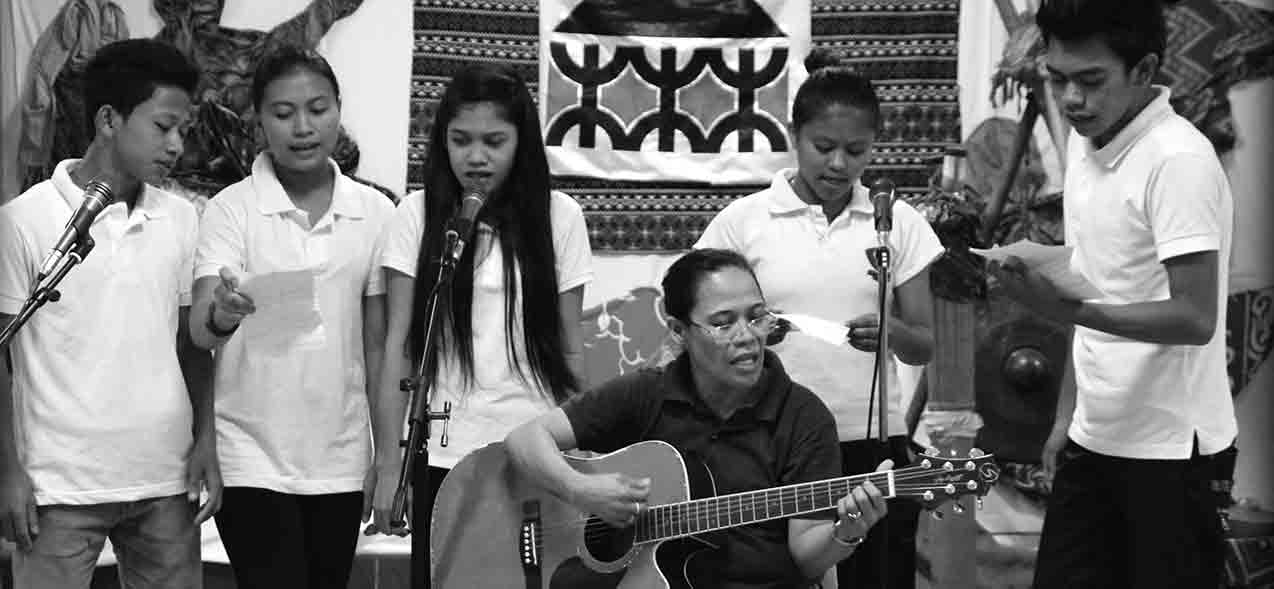A statement from Balay Rehabilitation Center
Like a number of advocates of children's rights, we at Balay, also believe that lowering the age of criminal responsibility is not the solution to the problem we face with children being involved in criminal activities and violence.
In this position paper, we would like to share our experiences in working in Bagong Silang, Caloocan City (Bagong Silang hereafter) with our children and youth partners who, once or several times in their lives, have been involved in illegal activities. We would like put across the message that lowering the age of criminal responsibility is a short-term fix for a problem that requires long-term efforts. Likewise, we also believe that we need to transform popular perception, especially for adults and law enforcement agencies, to the understanding that children and youths are often victims rather than perpetrators. We also argue for the position that the spirit of the Juvenile Justice Law is correct and wise, but is not fully utilized due to ineffective implementation and the lack of resources devoted to its objectives.
Putting Youth and Criminality into Context
We cannot deny that some children are involved in various criminal activities and violent acts. However, in our experience in working in Bagong Silang, we have learned the importance of putting these occurrences in their proper context. We believe that, more than their personal tendencies, some children are predisposed to get involved in criminal activities and violence due to their social milieu. To put it in simple terms, it is hunger, lack of education and dysfunctional families (to name a few factors) that put children in a position that increases their tendencies of getting involved in, say, robbery or substance abuse. Having said this, we in Balay believe in the saying that, "No one is born a thief, a murderer, a drug addict or a criminal". It is hunger and extreme poverty that pushes them to hijack a jeep and rob its passengers of their possessions; it is dysfunctional families that lead them to be dependent on alcohol or illegal drugs; it is the lack of education and opportunities that push them to look for "easy money". As we have learned from our children and youth partners in Bagong Silang, it is the adverse life conditions that increase their vulnerability. These adverse life conditions are very apparent in Bagong Silang where six out of ten households are under the poverty threshold; where nearly five out of ten individuals eligible for work are unemployed; and, individuals stop their schooling around first year high school.
It is therefore imperative that our government address these long-term socio-economic issues if we are to solve the phenomenon of children in conflict with the law instead of putting the blame back on children by lowering the minimum age of criminal liability.
Perception and Actual Levels of Violence
As said earlier, children getting involved in crime and violence are clear and present. We often see these incidents being showcased in media reports, but, up to what extent? Let us present some empirical data about children's involvement in violence based on a research Balay did in 2010 (see notes below).
When asked about whom residents think are the most frequent perpetrators of violence and trouble in their locality, more than two-thirds of the respondents said that it was children. However, contrary to popular perception, less than a third of the violent acts documented by the survey were perpetrated by children; in fact, most of the violent acts were committed by adults.
Moreover, most of the victims of violence were young people who are often unemployed, under-schooled and poor. In this sense, children suffer a double-vulnerability. First, more than perpetrators of violent acts, children are victims of violence perpetrated by adults. Second, children suffer from the stigma of being the "usual suspects" whenever violent episodes or criminal activity occurs in an area. Based on Balay's experience, the stigma suffered by children of being the "usual suspects" adds to the risk of suffering from indiscriminate acts of violence, especially from agents of the state.
In the end, the results of the survey clearly present us a picture that runs against popular belief, that is, children are victims more than they are perpetrators of violence.
Implementation of the Juvenile Justice Law
We believe that the spirit of the Juvenile Justice Law is correct and wise. Like any other law in the Philippines, the problem is implementation and resources. In our experience in working with the Barangay in Bagong Silang, we observed that social workers and staffs working with CICLs are often over-loaded, under-paid and lack the supporting resources (i.e. shelter houses, vehicles and budget for visitations) to effectively implement the program.
To illustrate: often, social workers of the Barangay are confronted with cases of youth offenders that require "specialized" services (i.e. the youth offender needs to be admitted to a shelter house) but are forced to do no more than to return them to their households and invite them for weekly counselling sessions. Making things worse is the fact that once they return the children to their households, they are faced again with the same problems and conditions that led them to get involved in criminal or violent activities on the first place. The social workers and staffs of the Barangay have the best intentions for the children of Bagong Silang. As they would often say, they have a "big heart" for children and youths. However, "heart" could only get you so far if you do not have the resources and infrastructure to implement your program.
Having said these, lowering the minimum age of criminal responsibility is clearly not the solution; what we need are more social workers, increased spending for the implementation of the law and the infrastructure (i.e. shelter houses) to effectively run the program.
Transformation: Giving Young People a Second Chance
Lowering the minimum age of criminal responsibility will not be beneficial; especially for the young people. Moreover, it seems that the proposed amendment of lowering the age of criminal responsibility puts the blame back on children. In our organization, we believe that, again, "No one is born a thief, a murderer, a drug addict or a criminal". More than any other factor, we believe that it is the social milieu of children that lead them to a life of violence and criminality. It seems that the proposed amendment to the law is a short-term fix to a problem that requires a long-term solution; an amendment that move towards punishing instead of transforming children (which goes against the spirit of the law and the principle of restorative justice); an amendment that moves to shun away the young and misunderstood to a range of opportunities in life instead of non-judgement, understanding and giving them second chances.
We do not however believe that children who have committed offenses should be free from any liabilities. There is a proper process to be followed for child offenders and that is not putting them behind bars but undergoing a judicial process where restorative justice is the framework. Our experience have shown a perspective where it is possible to transform children and youths who are branded as violent, criminal and, as the proposed amendment suggests, hopeless without putting them behind bars.
Notes:
Back in 2010, Balay Rehabilitation Center undertook a research project which aims to measure the level of violence in Bagong Silang using a victimization survey. The study was in partnership with the Danish Research and Rehabilitation Center for Torture Victims (RCT). In the study, Balay interviewed 400 randomly selected households in Bagong Silang. The survey asked for (a) basic demographic information, (b) perceptions about violence and experience of violence for the past two years, and (c) what people do to seek redress. Of special interest in the survey is the involvement of children and youths in violence.























